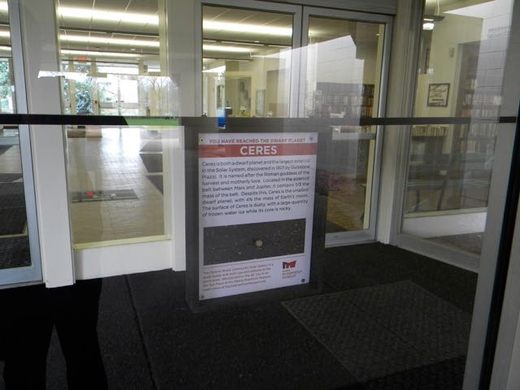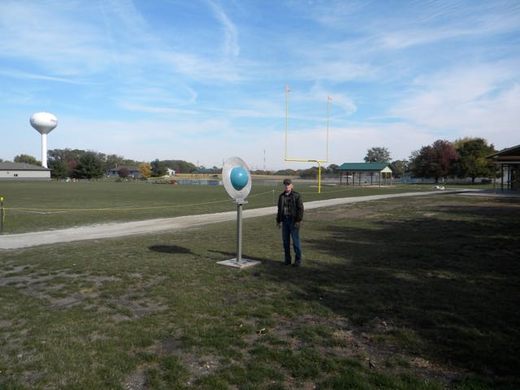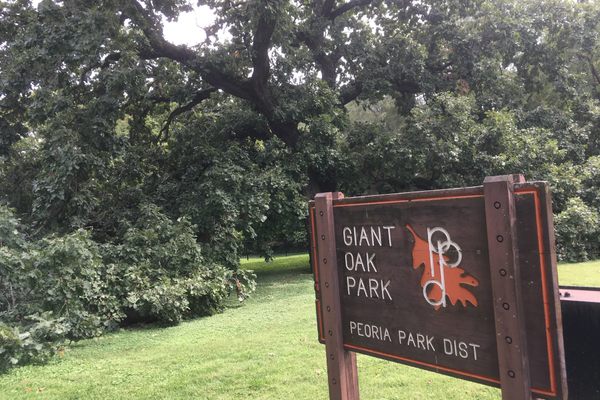Peoria Scale Model of the Solar System
The world's third-largest scale model of the planets.
In the world’s third-largest scale model of the solar system, a million miles are condensed into 53 feet.
Visitors interested in scaled-down interplanetary travel can begin their journey at the Peoria Riverfront Museum’s Sun Plaza, where yellow and red pavers laid in a 46 foot circle represent the solar system’s Sun.
At a scale of 1:99,000,000 the planet Mercury, is just 2 inches tall and is located a third of a mile away along a riverfront trail. Mars is 1.4 miles away in Detweiller Marina Park, near the end of the trail. From there you’re going to need a car.
Jupiter, a large four and a half feet in diameter, is located in the General Wayne A. Downing Peoria International Airport, about 5 miles from the museum. The dwarf planet Pluto, just 1 inch in diameter, can be found in the middle of a furniture store in Kewanee, 40 miles from the museum.
Dwarf planets can be found hanging around Bloomington, Galesburg, and Macomb but the model refuses to stop there.
Those with a true passion to appreciate the vast scale of our universe can visit a handful of asteroids scattered across the world. Unnamed comets of the outer Kuiper Belt stretch from Barrow, Alaska to the South Pole Station. (The last visitor to South Pole Station couldn’t find the actual comet plaque – but it is probably just under the ice, as staff there are pretty sure no one stole it.)
The model even stretches, at least theoretically, to the actual moon itself. According to the model’s curator the Alpha Centauri Star System is represented, to correct scale no less, by the Little West Crater at the Apollo 11 landing site. No plaque exists there. Yet.
Fortunately, in such a scaled-down universe, the speed of light is only 6.8 miles per hour, a brisk jog.
* This model replaced a model that was inaugurated in 1992, centered at Lakeview Museum of Arts and Sciences. The museum moved in 2012 to the Peoria Riverfront Museum, and a new larger model was created. In 1992 it was the largest such model in the world, in the Guinness Book of Records from 1993 – 1998, at which point Guinness dropped the category. Since then, two larger models have been created, in Maine and Stockholm. Sweden’s model is 1:20,000,000 although it’s now missing both models of Jupiter and Saturn, and Maine’s model is to a scale of 1:93,000,000. As the Maine model notes, they’re now the largest “complete” model of the Solar System since the Sweden model is missing the Jovian planets. This would make the Peoria model the 2nd largest “complete” model.
Know Before You Go
Directions provided by the museum http://www.peoriariverfrontmuseum.org/dome-planetarium/community-solar-system will guide you to the first four planets spaced out on the walking trail along the riverfront.




















Follow us on Twitter to get the latest on the world's hidden wonders.
Like us on Facebook to get the latest on the world's hidden wonders.
Follow us on Twitter Like us on Facebook